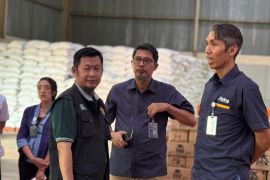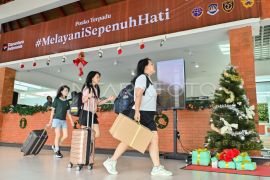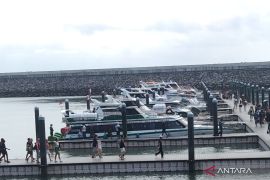Jember, E Java (Antara Bali) -- The quality of tobacco grown in plantations in East Java is being affected by the volcanic ashes spewed by the erupting Mount Raung.
"Volcanic ashes from Mount Raung rained on most of the tobacco plantations (in the region), which has greatly affected the quality of the plant," Deputy Head of the Indonesian Tobacco Farmers Association Hendro Handoko said here on Monday.
Tobacco farmers in Jember had planted the crops in May and June, and volcanic ashes from Mount Raung have affected all 31 sub-districts in the region.
The ashes damage tobacco as they clog the pores on the leaves and stems of the plants, which reduces the quality.
"If the quality of tobacco diminishes, it will lead to a fall in the price at which it is sold to exporters and manufacturers. Therefore, farmers may incur losses due to the eruption of Mount Raung," Handoko explained.
Although volcanic ashes affected plantations in all sub-districts of Jember, the most severe damage was caused to plants in the districts of Sumberjambe, Ledokombo and Silo.
Moreover, Setiawan, a tobacco farmer of Jember, along with other farmers, is trying to remove the sticky volcanic ashes by spraying his plantation with water.
"The continuous rain of volcanic ashes over Jember has greatly affected our tobacco plantations and reduced its quality. As a result, the price will drop," he remarked.
Mount Raung in East Java province erupted on July 5, spewing a plume of smoke, incandescent cinder and lava.
Head of the Data and Information Center of the National Disaster Mitigation Agency Sutopo Purwo Nugroho said that Mount Raung's eruption was the strombolian kind, which means that it is a relatively low-level volcanic eruption that includes the ejection of incandescent cinder and thin lava with medium pressured gases.
The eruption is not too strong but is continuous and long-lasting, he added.
Mount Raung is one of the active volcanoes on the Java Island. It is 3,332 meters above sea level and is located at the border of the districts of Jember, Bondowoso and Banyuwangi.
It has a 2-kilometer-wide caldera surrounded by a grayish rim. The difference between the color of the rim and that of the flanks of the volcano is caused by the rim's lack of vegetation as compared to the healthy and extensive vegetation on the flanks. (WDY)









